Our top 10 first chapter books
Reading a chapter book for the first time is traditionally viewed as a badge of honour on the road to becoming a confident reader. We have included a selection of titles here which children developing experience and confidence as readers may enjoy. However many picture books have plenty to challenge young readers so should not be cast aside.
You might want to share the reading for the books with more text here such as The Owl who was afraid of the Dark and The Magic Finger. Although children need to be able to read most words so that they can understand and enjoy the stories don’t worry if they can’t read every single word accurately. Some children may want to read the books aloud to you, others may prefer to read to themselves (even if they are actually reading out loud as they do!)
 Cudweed in Outer Space Marcus Sedgwick, Pete Williamson (illus)
Cudweed in Outer Space Marcus Sedgwick, Pete Williamson (illus)
Orion Books
Cudweed builds a rocket with his pet monkey Fellah and has a very unusual adventure crash landing on planet Zoy amidst aliens called Thrillions.
 Frog and Toad are Friends Arnold Lobel
Frog and Toad are Friends Arnold Lobel
Harper Collins
A book with five amusing short stories about two appealing characters and their unlikely friendship.
 The Hodgeheg Dick King Smith
The Hodgeheg Dick King Smith
Puffin Books
Max the hedgehog’s attempts to cross the road to get to the park like humans lead to a bump on the head and jumbled speech (he becomes a hodgeheg instead of a hedgehog). An appealing story from a prolific storyteller.
 Horrid Henry Francesca Simon, Tony Ross (illus)
Horrid Henry Francesca Simon, Tony Ross (illus)
Orion Children’s Books
Is Horrid Henry the world’s naughtiest boy? He is certainly very popular amongst young readers and is celebrating a 20th birthday in 2015.
 The Magic Finger Roald Dahl, Quentin Blake (illus)
The Magic Finger Roald Dahl, Quentin Blake (illus)
Puffin
Find out what happens when one little girl with a magic finger and a strong aversion to killing animals realises her neighbours are hunters. For children developing reading fluency.
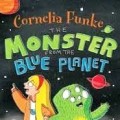 The Monster from the Blue Planet Cornelia Funke, Elys Dolan (illus)
The Monster from the Blue Planet Cornelia Funke, Elys Dolan (illus)
Barrington Stoke
Zaleb the alien visits Earth and wants to find out about earthlings. One of a series of stories from Barrington Stoke with an attractive format and layout for young readers.
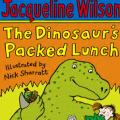 The Dinosaur’s Packed Lunch Jacqueline Wilson, Nick Sharratt (illus)
The Dinosaur’s Packed Lunch Jacqueline Wilson, Nick Sharratt (illus)
Corgi Pups
Dinah is fed up, everything is boring including her class trip to the museum. That is until a dinosaur makes her a packed lunch and Dinah finds herself becoming… a dinosaur!
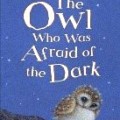 The Owl who was Afraid of the Dark Jill Tomlinson, Paul Howard (illus)
The Owl who was Afraid of the Dark Jill Tomlinson, Paul Howard (illus)
Egmont
An appealing story about a baby owl who takes some time to become convinced night time is for him
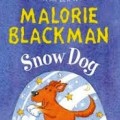 Snow Dog Malorie Blackman
Snow Dog Malorie Blackman
Corgi Pups
Nicky is upset that her parents won’t let her have a dog. Her grandfather helps her make one out of clay, a dog which proves to be extra special and rather magical as well.
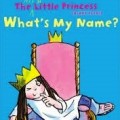 What’s My Name? (The Not so Little Princess) Tony Ross (illus) Wendy Finney
What’s My Name? (The Not so Little Princess) Tony Ross (illus) Wendy Finney
Andersen Press
A book which continues the story of Tony Ross’ little princess a few years on. Very accessible for newly independent readers with a good balance of text and humorous illustrations and lots of links to the original stories.
Interview with Mini Grey – The Greatest Show on Earth
The Greatest Show on Earth sets out to tell the 4.6-billion-year story of life on Earth in a picturebook. We discussed this wonderful book by Mini Grey with a group of young readers aged between 7 and 11. They had lots of interesting questions. We put their questions to Mini who has kindly answered them here:
Imogen How/when did you get the idea to create The Greatest Show on Earth? Did someone inspire you to make this book? Mini When my son Herbie was about 5 years old, we spent a lot of time hanging out in the Oxford Museum of Natural History. Gazing at the dinosaur skeletons, I realised there were enormous gaps in my knowledge of prehistoric life, and I didn’t even know how old the Earth actually is. So really it was the dinosaur skeletons in the Oxford Museum that inspired me! Matthew Why did you make it? Mini I wanted to show life on earth as a story, and I wanted to show the whole story so the reader gets an idea of the framework of time. The more you find out about the evolution of life on Earth, the more staggering and awe-inspiring it is, and that’s really why I made this book. Finding out about how everything evolved means you start to see the story of evolution in everything around you and how we’re all connected. Imogen Why did you choose to do this book as a shoe box theatre? Mini In my book I wanted Rod and the Troupe to tell Earth’s story – but with ordinary materials, with cardboard and string and packaging – the sorts of materials anyone might be able to find around the house or in their recycling bin. My story is told by insects: even the smallest creatures with the humblest materials can aspire to tell Earth’s amazing story. We all can, it’s all of our story.  Naomi How do you know about the different facts inside the book? MIni When I’m making pictures, I often like to listen to online talks and one of my favourite topics is prehistoric Earth and animal evolution. But then when I started properly researching the Greatest Show I read books – some for adults, but also books for children (which always have more pictures!). I had to check my facts, and also draw different prehistoric animals – and researching images and content online was a good way to do this. I also asked expert professors to check I had my facts straight. Esme How did you choose what (ie information) to put in and what to leave out? Mini This is such a good question – sometimes what to leave out can be as important a decision as what to put in. The amount I had to leave out was colossal – I only had 48 pages to work with! I decided to focus mostly on the evolution of animals a bit like us, eg fish, amphibians, reptiles, dinosaurs. In the timeline at the bottom, I could only really tell one or two things about the Earth’s climate and geological goings on – so again I tried to pinpoint one or two key things that affected animal life particularly at the time. Naomi How/why did you decide on a timeline tape measure? MIni When I found out the age of the Earth I just wanted to see what that looked like, and hold 4.6 billion years in my hand. A tape measure is a pretty ordinary household object that you might just find lying about, and it can be rolled up and unrolled, which is useful. Esme How did you come up with the idea for how you have set it out and organised the information? Mini I sometimes find non-fiction books difficult to read because there’s so much information presented simultaneously, and I don’t know where to look first. I made a toy theatre for a project with Pollocks Toy Theatre Museum, and I realised that the toy theatre layout gave me different areas for different activities to happen: a main stage, wings on either side and an orchestra pit along the bottom. I thought I could use this format to break down my information, so you know where to look first. Dylan What gave you the idea of using household objects to describe the history of earth? Mini I wanted this story to be a performance – so that you’re not seeing what actually happened, but a re-enactment of it. It started with wanting the story to be told by a cockroach – and from there – the shoebox theatre had to be on a dump. The dump could be full of materials the insects can use to make their props: I love the idea of transforming rubbish into puppets. Also I love drawing tin cans, bottles and packaging.  Dylan How long will it take for humans to really respect other life forms? MiniDylan – that is an incredible question to ponder! I think there are many, many people who love and respect nature – including all the people who work with nature – and I think children particularly love nature and animals. Scientists, especially, can see that we live within a precious, unique cathedral of life, and we mustn’t carelessly let all this diversity ebb away. But the voices of the people who care don’t seem to be heard by the people in power – the people in government. How can we get them to care too? Imogen What was your goal for this book – was it for people to really enjoy reading it? Mini Yes! I really wanted my readers to enjoy the show and to entertain them! I wanted my book to be easy to read, but also for lots of facts and insights to be there if you wanted to look for them. My goal was to bring Earth’s timeline to children –and to show our Earth and the animals on it changing through time, enormous amounts of time. We live on an extraordinary, unique planet: everything – from the mites in your eyelashes to the woodlouse under that stone – is interesting. Matthew Was The Greatest Show on Earth your favourite book you made? Mini It’s been the longest book to make! But, yes, it could be my favourite because the making of it involved finding out as much as possible about the story of Earth. The more you find out, the more you find out you don’t know! So, I still want to carry on finding out more about this story – and new animals are being unearthed all the time, so there’s always more to discover. The book prompted lots of conversation For example: ‘If we carry on evolving – will humans have noses in the future?’ The cataclysmic events in the Earth’s history were of particular interest and ‘what came first the chicken or the egg… ?’ Here are some of the children’s comments: Matthew (7) I like the cover, it makes you want to read it. Naomi (9) It’s funny, informative and clever. Instead of a full-on facts book, it’s insects doing a show. Imogen (10) It’s intriguing. If you want to learn about the earth but don’t want to go through all that studying, you could read this book and you’d be happy as well as knowledgeable! Dylan (11) It brings adults and children together with the illustrations – they start a discussion. Esme (8) I like the cooking up a planet idea, it’s like a recipe – though it’s going to take much longer! Buy The Greatest Show on Earth available in hardback now, paperback edition available from April 2023. |
If I Had a Sleepy Sloth
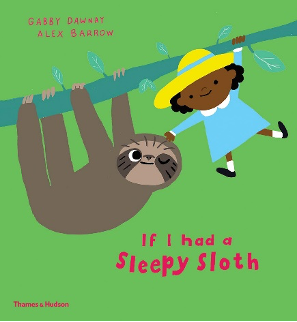 Gabby Dawnay, illus. Alex Barrow,”
Gabby Dawnay, illus. Alex Barrow,”
Thames and Hudson
Age 0-5 years
A little girl thinks about different animals she might have as a pet and decides that she would like a sleepy sloth. She describes the reasons she would like one, because they are smiley and good at gripping and hiding. She talks about all the things they might do together, playing games, swimming but mostly…. chilling!
This is an appealing and amusing picture book for the very young with great illustrations. The rhyming text and picture clues make it easy for young children to join in with reading once they are familiar with the story. This is another in the series by the same team. See our activity page for If I had a Dinosaur.
Watch the story read aloud by David Schwimmer on CBeebies
Share the story
Read aloud
Before starting to read the book to your child look at the cover together and talk about the animal pictured and other kinds of animals your child knows it reminds them of. If you have a copy of the hard back book you could feel the texture of the sloth on the cover too.
Read the story aloud to your child.
Join in
Children can join in with the opening spread – naming the animals the little girl might choose as pets from the images. If you leave pauses your child might like to supply the rhyme at the end of each couplet. Children of 4 or 5 beginning to learn to read can follow the words as they curve over the pages with their finger as you re read the story.
Talk about the story
-
Share favourite pages together and why you like them.
-
There are some words which are likely to be new to your child such as ‘peek’, ‘hammock’ and ‘camouflage’
-
Talk about what pet each of you would like if you could have any animal in the world and why – as exotic as you like.
Things to make and do
Be like a sloth
You could both try being very, very still like a sloth. Which of you will move first?! Can your child close one eye like the sloth in the cover illustration? Try dragging your body along the ground like a sleepy sloth. Go to the park and use the climbing frame to hang upside down and move like a sloth. Make your movements very slow, gripping on really tightly to the climbing bars.
Play hide and seek
See if you can be as good at hiding like a sloth, trying to keep very still and choosing where you hide carefully so you can’t be seen.
Make a rainforest setting in a large tray
Set up a large tray or builders tuff spot with greenery cuttings and house plants, pieces of bark, twigs and logs. Add some small wild animal toys. You and your child could hide different animals in the foliage and see if they can be found.
Make a picture
Make your own picture of a sloth hanging upside down. You could add camouflage to your picture with tree bark, twigs and leaves using paint or collage.
Find out more
Read more books by this author and illustrator team:
There are two more books In the same series:
If I had a Dinosaur (see here for our activity page)
If I had a unicorn
Other books by the same team:
London Calls
A Possum’s Tail
A Roller Coaster Ride Around the Body
Find out about sloths:
-
Find out about sloths from information books or online
-
Watch a video filmed in an American zoo
-
If possible visit a zoo such as London Zoo to see sloths living in a rainforest environment
Find out about animal camouflage:
Look at photos of some camouflaged animals, can you spot them? See here
Your child might like to make their own picture of imaginary animals hidden by their camouflage.
Adopt a sloth
To help with their protection and conservation adopt a sloth
https://www.folly-farm.co.uk/adopt-an-animal/sloth-adoption/
https://shop.zsl.org/content/adopt-sloths
The Paper Dolls
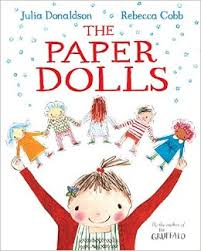 Julia Donaldson, Rebecca Cobb (illustrator)
Julia Donaldson, Rebecca Cobb (illustrator)
Macmillan
Age 5-7
A little girl makes some paper dolls with her mother’s help. She names and plays with them constantly, having all sorts of adventures including escaping danger from a dinosaur, tiger and crocodile. Holding hands, the paper dolls escape all of these dangers until they meet the ultimate threat – a pair of scissors! Cut to pieces, the only place the dolls can fly is into the little girl’s memory along with many other very special things. And then, years later, she is able to teach her own daughter to make paper dolls too.
A lovely story with beautiful illustrations about imagination, memory, and links between generations which will give you lots to talk about and do.
Watch a trailer which animates the beginning of the story
Share the story
Read aloud
Read the book aloud pausing when your child would like to talk about what is happening in the story or pictures. Pause when the boy cuts up the dolls. What would children like to happen next?
Join in
When children become familiar with the story they could join in as you re read it with the paper dolls’ song and the words of the dinosaur, tiger and crocodile eg ‘I’m coming to crunch you!’
Talk about the story
Talk about the different dolls and the names for them, what might each of them be like?
Can you spot the butterfly slide on every page?
Talk about the boy cutting the dolls up. Why might another child (boy or girl) do something like that?
Talk about how the little girl might have felt at different points in the story
Share memories; what special things (toys, places, or people) do children remember or which nice things would they like to remember when they grow up? Talk about your own childhood memories. Did an adult teach you to make something special?
Watch the story
The author, Julia Donaldson reads the story and talks about it here.
Things to make and do
A parent writes...
Samantha tells us about sharing the book and our activity ideas with her daughters.
‘Both my girls (aged 6 and 8) really enjoyed The Paper Dolls. It is a tender, partly rhyming and comfortingly repetitive tale that is easy for children to remember and recite back - it was a real winner with my two.
My eldest daughter enjoyed reading it out to us herself and using the repeat of the dolls’ names in a rhythmic way which sounded nice. The book is not without its emotional challenges, and my youngest in particular was a bit upset when the paper dolls were destroyed. Although the dolls’ destruction was a shock, it does teach young children about loss, how ultimately nothing lasts forever and how all things change which is a valuable life lesson to take away. Her favourite part was the scene in the girl’s imagination where the dolls live again and as she rather poignantly said; “the granny is keeping them safe.”
In response to the demise of the dolls, both my girls made their own paper dolls, the eldest from a book where they could be cut out and designed, and my 6-year-old made her own jellyfish versions! (She has a particular interest in jellyfish, the reasons for this are known only to herself!)’
nbsp;
A parent writes...
Samantha tells us about sharing the book and our activity ideas with her daughters.
‘Both my girls (aged 6 and 8) really enjoyed The Paper Dolls. It is a tender, partly rhyming and comfortingly repetitive tale that is easy for children to remember and recite back - it was a real winner with my two.
My eldest daughter enjoyed reading it out to us herself and using the repeat of the dolls’ names in a rhythmic way which sounded nice. The book is not without its emotional challenges, and my youngest in particular was a bit upset when the paper dolls were destroyed. Although the dolls’ destruction was a shock, it does teach young children about loss, how ultimately nothing lasts forever and how all things change which is a valuable life lesson to take away. Her favourite part was the scene in the girl’s imagination where the dolls live again and as she rather poignantly said; “the granny is keeping them safe.”
In response to the demise of the dolls, both my girls made their own paper dolls, the eldest from a book where they could be cut out and designed, and my 6-year-old made her own jellyfish versions! (She has a particular interest in jellyfish, the reasons for this are known only to herself!)’
Make paper dolls
Help your child make a chain of paper dolls. You could follow the instructions on the video link or webpage or use the pictures in the book to guide you so that some dolls are wearing trousers and some dresses. Your child could then decorate and name them, making sure each one is special and different.
Make your own story
Children could make up a story with their own paper dolls – perhaps their dolls will be in danger from a scary animal attack. You could play the story together using a toy or improvised glove puppet (oven glove perhaps?!) for the imminent danger to the dolls.
Make a story book
You could help your child write their paper doll adventure story in a zig zag book and then they can illustrate it.
Make a memory box
Using a shoe box children can put in a few special things, objects, photographs and drawings. They could decorate the box to make it look special with wrapping paper and label it ‘my memory box’. Encourage your child to tell another member of the family about their memory box and what is inside. This would be an opportunity for older family members to share memories with your child too.
Find out more
Find out about the record breaking longest chain of paper dolls made in 2013 here
Maybe you could make a really long chain of paper dolls too! Maybe some friends could help.
Read more books by author Julia Donaldson here
Titles with activities on LoveMyBooks are:
The Gruffalo
Room on the Broom
The Snail and the Whale
Tyrannosaurus Drip
What the Ladybird Heard
Read more books by Rebecca Cobb here
Lunchtime
The Something
Missing Mummy
Aunt Amelia
Our top 10+ books with girl power
The books in our list challenge traditional stereotypes and gender marketing, demonstrating that being a girl does not require you to dress or behave in a certain way and you can be the hero in the story too. They show strong female characters choosing what they want to play with, having adventures and standing up for themselves. Our list includes recently published books and well known stories. There are also real life stories here of significant women, some alive today such as the inspirational Malala and some who have made a difference throughout history as well.
We hope this collection will help inspire girls to aspire and that you will enjoy sharing them with your daughters, and with your sons too.
Ada Twist Scientist, Andrea Beaty, David Roberts (illus)
Abrams books for young readers
Age 5-7
Ada Marie doesn’t start talking until she is three, but when she does she is full of questions and curiosity about the world ‘Why are there pointy things stuck up a rose?’ ‘Why are there hairs up inside your nose?’ She causes havoc in her quest to find answers to these questions, both at home and at school. Her parents and teacher recognise she is showing the traits of a scientist with her questions, hypotheses and endless tests and try to help. But the question which is most perplexing Ada is a strange smell which seemed to follow her around. A mystery which young readers might like to speculate about! Could it be her brother’s smelly feet…!?
An amusing story and rhyming text which skips along and illustrations which add to the humour.
Watch a trailer
Watch the story read aloud From Nana Kate
See also Rosie Revere Engineer and Iggy Peck Architect
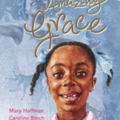 Amazing Grace
Amazing Grace
Mary Hoffman, Caroline Binch (illus)
Frances Lincoln books
Age 5-7
Grace absolutely loves stories and spends as much time as possible acting them out. When her teacher announces the class will be performing Peter Pan Grace in desperate to be given the leading role. Her classmates tell her the she can’t be Peter Pan because she is a girl and because she is black. Grace is understandably upset by this. Her ma and nana tell her she can be whatever she wants to be. Ma tells her Peter Pan is always a girl anyway and Nana takes her to see a ballet with a black lead ballerina. Inspired, Grace gives a brilliant audition and is chosen to play Peter Pan and is a huge success.
This is a beautifully illustrated and aspirational story about striving for your dreams.
As Grace’s Nana says ‘You can be anything you want Grace if you put your mind to it.’
Amazing Grace is one of a highly successful series about Grace by the same author/illustrator team. See our activity ideas for another in the series, Grace and Family here:
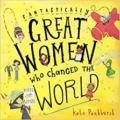 Fantastically Great Women who changed the World
Fantastically Great Women who changed the World
Kate Pankhurst
Bloomsbury
Age 5+
This accessible picture book celebrates the achievements of great women throughout history. It includes women from a wide range of fields such as science, aviation, archaeology, activism, sport, literature, art and even espionage! The stories of some of these are well-known such as Anne Frank and Rosa Parks, but some such as Sacagawea, a Native American Indian will be less so. This book is attractively illustrated with a double page spread for each of its subjects. Emmeline Pankhurst, the leading British Suffragette with whom the author Kate Pankhurst has a distant family connection is included too.
The publisher Bloomsbury have a freely available activity book you can download here
See also: Fantastically Great Women who Changed History by the same author.
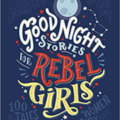 Goodnight stories for Rebel Girls
Goodnight stories for Rebel Girls
Elena Favilli and Francesca Cavallo
Particular Books
Age 7+
Written in bedtime story style, with a hundred mini biographies of significant women throughout history and from across the globe, this is a fascinating book. We travel back in time to meet Cleopatra and back to the present to find out about Malala Yousafzai’s story and achievements. Significant women from the worlds of science, the arts, archaeology, espionage, exploration and athletics are included. Some names such as Florence Nightingale and Michelle Obama are well known but many are virtually unknown.
Carefully researched and published after a successful crowdfunding campaign this book developed after the writers’ concern about what they perceive as continued gender stereotyping in media, the writers aimed to challenge this.
The beautiful portraits alongside each biography by female artists make this a very attractive book. There is space at the back for young readers to write their own story or ambitions. A book to open all children’s eyes to the role of women in our world’s ongoing story and inspire young girls to follow their dream.
There is also a sequel for readers looking for more stories about inspirational women, Goodnight Stories for Rebel Girls 2.
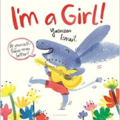 I’m a Girl!
I’m a Girl!
Yasmeen Ismail
Bloomsbury
Age 3-5
The main character in this story loves speeding on her scooter, running really fast, playing the drums loudly and she is always making a mess. Everyone assumes she’s a boy because she behaves like this and wears shorts not dresses. She quickly puts them right though, declaring, ‘I’m a girl, I’m a girl, I’m a girl!’
This is a book which challenges what girls and boys can do; girls can race about make a noise one minute and play with soft toys the next. And it’s ok for boys to wear skirts and play with dolls too. In fact this is a book which celebrates the message on the cover ‘Be yourself, there’s no one better,’ shouting it loud and clear.
Yasmin Ismail talks about the background to the story here
Watch a trailer here
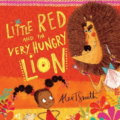 Little Red and the Very Hungry Lion
Little Red and the Very Hungry Lion
Alex T Smith
Scholastic
Age 3-7
In a delightful twist on the Red Riding Hood story, a very hungry lion is no match for Little Red. Set in a vibrant African landscape with gazelles and elephants, Little Red lives with her daddy and sets off to visit her auntie to take her medicine when she is ill. On her journey she travels over sleepy crocodiles and catches a lift on an elephant. Little Red meets a lion on the way who works out a clever plan to eat her. He has underestimated Little Red though, she isn’t fooled by his disguise when she meets him at her auntie’s house. With no messing at all she teaches the lion a thing or two causing him great embarrassment by giving him a new hairdo, dressing him up and telling him the error of his ways. The lion seems repentant and content with doughnuts instead of little girls to eat in future, though he hasn’t completely ruled out eating Little Red’s daddy…
This is a very funny story with an assertive heroine. The illustrations are fabulous and the double page picture of the lion with his hair braided hilarious.
Malala’s Magic Pencil
Malala Yousafzai, Keraskoët (illus)
Puffin Books
Age 7+
This sensitively illustrated picture book, which tells Malala’s own story, aims to explain it in simple terms and inspire others to find their own ‘magic’ just as Malala found her voice.
As a child Malala wished she had a magic pencil to change the world for the better, for example, she would draw schools for her father with it so children could study for free. Education really matters to Malala and when dangerous men stopped girls attending school she started writing about what was happening in her country and people around the world started listening to what she had to say. With just a hint at the attempt on her life Malala describes her continuing fight for education and equality:
‘One child, one teacher, one book and one pen can change the world.’
Malala introduces her book here
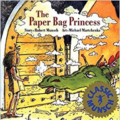 Paper Bag Princess
Paper Bag Princess
Robert Munsch, Michael Martchenko (illus)
Annick Press
Age 5-7
First published in 1980, this classic feminist picturebook still entertains and has a strong message. Princess Elizabeth is all set to marry Prince Ronald when a dragon smashes her castle, burns it down and carries off her Prince. Undeterred, Elizabeth dresses in the only thing she can find, a paper bag and sets off to rescue him. With bravery and cunning, she outwits the dragon and rescues the prince. Instead of being grateful, the prince criticises her appearance and tells her to tidy herself up! At this the heroic princess decides he is not the one for her after all and the marriage is off
For another story about a Princess who definitely isn’t looking for a handsome prince see Princess Smartypants by Babette Cole.
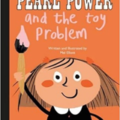 Pearl Power and the Toy Problem
Pearl Power and the Toy Problem
Mel Elliott
I Love Mel
Age 5-7
When Pearl’s new neighbour Jerome comes to visit he brings his toy dinosaur. He tells Pearl and her friend Sebastien that she can’t play with it because she’s a girl – dinosaurs are for boys, he learnt that from a TV Ad. Pearl decides to teach Jerome a lesson by ‘pinkifying’ his dinosaur, much to his dismay. Sebastien points out that dinosaurs are not only for boys and there’s nothing wrong with a pink one either. Not content with this, Pearl and Sebastien write to the woman in charge of the TV and ask her to block these ads. They are delighted to receive a reply which declared:
‘From now on the makers of toys will have to stop saying they are for girls or for boys.’
A direct challenge to toy manufacturers and the media and lots to discuss in this amusing rhyming story. This is one of a series about Pearl Power.
See a trailer for the first in the series here:
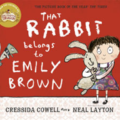 That Rabbit Belongs to Emily Brown
That Rabbit Belongs to Emily Brown
Cressida Cowell, Neal Layton (illus)
Hodder Children’s Books
Age 5-7
Emily Brown has a very special toy, an old grey rabbit called Stanley. Every day they have amazing adventures together; in outer space, under the sea, in the desert and deep in the rainforest. When Queen Gloriana’s chief footman knocks at the door offering to swap Stanley for a brand new teddy Emily says emphatically, ‘NO’. Undeterred the queen sends the army, the navy and the air force, each offering more and more gifts in exchange for Emily’s toy rabbit. Nothing persuades her to part with her favourite toy until the Queen’s special commandos steal Stanley from Emily’s bedroom. Emily is furious and goes immediately to the palace where she finds Queen Gloriana and Stanley in a sorry state. Emily takes charge, rescues Stanley and tells the queen exactly what to do so that she can have a special toy of her own.
A funny, clever story with a great main character. Emily’s assertive responses to her rather self-important series of visitors make this story fun to read aloud and share again and again. Brilliant illustrations add to the humour.
See our activity ideas here
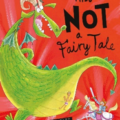 This is not a fairy tale
This is not a fairy tale
Will Mabbitt, Fred Blunt (illus)
Puffin
Age 3-7
Why do princes have all the adventures while princesses have to wait to be rescued? Sophie, fed up with this, decides to change the story while dad reads to her. Her story has a brave princess, a bald prince locked in a tower (obviously), a transforming combine harvester/robot (less obviously!) and a fire breathing dragon. The princess saves the day and dad gets so carried away with the brilliant adventure he forgets he is cooking sausages for tea which end up rather burnt.
An amusing story with equally amusing illustrations which might encourage some changes to traditional story play roles. The fun Sophie has creating her own story might encourage children to have a go too.
Interview with Mini Grey – The Greatest Show on Earth
| The Greatest Show on Earth by Mini Grey |
| The Greatest Show on Earth sets out to tell the 4.6-billion-year story of life on Earth in a picturebook. We discussed this wonderful book by Mini Grey with a group of young readers aged between 7 and 11. They had lots of interesting questions. We put their questions to Mini who has kindly answered them here: Imogen How/when did you get the idea to create The Greatest Show on Earth? Did someone inspire you to make this book? Mini When my son Herbie was about 5 years old, we spent a lot of time hanging out in the Oxford Museum of Natural History. Gazing at the dinosaur skeletons, I realised there were enormous gaps in my knowledge of prehistoric life, and I didn’t even know how old the Earth actually is. So really it was the dinosaur skeletons in the Oxford Museum that inspired me! Matthew Why did you make it? Mini I wanted to show life on earth as a story, and I wanted to show the whole story so the reader gets an idea of the framework of time. The more you find out about the evolution of life on Earth, the more staggering and awe-inspiring it is, and that’s really why I made this book. Finding out about how everything evolved means you start to see the story of evolution in everything around you and how we’re all connected. Imogen Why did you choose to do this book as a shoe box theatre? Mini In my book I wanted Rod and the Troupe to tell Earth’s story – but with ordinary materials, with cardboard and string and packaging – the sorts of materials anyone might be able to find around the house or in their recycling bin. My story is told by insects: even the smallest creatures with the humblest materials can aspire to tell Earth’s amazing story. We all can, it’s all of our story.  Naomi How do you know about the different facts inside the book? MIni When I’m making pictures, I often like to listen to online talks and one of my favourite topics is prehistoric Earth and animal evolution. But then when I started properly researching the Greatest Show I read books – some for adults, but also books for children (which always have more pictures!). I had to check my facts, and also draw different prehistoric animals – and researching images and content online was a good way to do this. I also asked expert professors to check I had my facts straight. Esme How did you choose what (ie information) to put in and what to leave out? Mini This is such a good question – sometimes what to leave out can be as important a decision as what to put in. The amount I had to leave out was colossal – I only had 48 pages to work with! I decided to focus mostly on the evolution of animals a bit like us, eg fish, amphibians, reptiles, dinosaurs. In the timeline at the bottom, I could only really tell one or two things about the Earth’s climate and geological goings on – so again I tried to pinpoint one or two key things that affected animal life particularly at the time. Naomi How/why did you decide on a timeline tape measure? MIni When I found out the age of the Earth I just wanted to see what that looked like, and hold 4.6 billion years in my hand. A tape measure is a pretty ordinary household object that you might just find lying about, and it can be rolled up and unrolled, which is useful. Esme How did you come up with the idea for how you have set it out and organised the information? Mini I sometimes find non-fiction books difficult to read because there’s so much information presented simultaneously, and I don’t know where to look first. I made a toy theatre for a project with Pollocks Toy Theatre Museum, and I realised that the toy theatre layout gave me different areas for different activities to happen: a main stage, wings on either side and an orchestra pit along the bottom. I thought I could use this format to break down my information, so you know where to look first. Dylan What gave you the idea of using household objects to describe the history of earth? Mini I wanted this story to be a performance – so that you’re not seeing what actually happened, but a re-enactment of it. It started with wanting the story to be told by a cockroach – and from there – the shoebox theatre had to be on a dump. The dump could be full of materials the insects can use to make their props: I love the idea of transforming rubbish into puppets. Also I love drawing tin cans, bottles and packaging.  Dylan How long will it take for humans to really respect other life forms? MiniDylan – that is an incredible question to ponder! I think there are many, many people who love and respect nature – including all the people who work with nature – and I think children particularly love nature and animals. Scientists, especially, can see that we live within a precious, unique cathedral of life, and we mustn’t carelessly let all this diversity ebb away. But the voices of the people who care don’t seem to be heard by the people in power – the people in government. How can we get them to care too? Imogen What was your goal for this book – was it for people to really enjoy reading it? Mini Yes! I really wanted my readers to enjoy the show and to entertain them! I wanted my book to be easy to read, but also for lots of facts and insights to be there if you wanted to look for them. My goal was to bring Earth’s timeline to children –and to show our Earth and the animals on it changing through time, enormous amounts of time. We live on an extraordinary, unique planet: everything – from the mites in your eyelashes to the woodlouse under that stone – is interesting. Matthew Was The Greatest Show on Earth your favourite book you made? Mini It’s been the longest book to make! But, yes, it could be my favourite because the making of it involved finding out as much as possible about the story of Earth. The more you find out, the more you find out you don’t know! So, I still want to carry on finding out more about this story – and new animals are being unearthed all the time, so there’s always more to discover. The book prompted lots of conversation For example: ‘If we carry on evolving – will humans have noses in the future?’ The cataclysmic events in the Earth’s history were of particular interest and ‘what came first the chicken or the egg… ?’ Here are some of the children’s comments: Matthew (7) I like the cover, it makes you want to read it. Naomi (9) It’s funny, informative and clever. Instead of a full-on facts book, it’s insects doing a show. Imogen (10) It’s intriguing. If you want to learn about the earth but don’t want to go through all that studying, you could read this book and you’d be happy as well as knowledgeable! Dylan (11) It brings adults and children together with the illustrations – they start a discussion. Esme (8) I like the cooking up a planet idea, it’s like a recipe – though it’s going to take much longer! Buy The Greatest Show on Earth available in hardback now, paperback edition available from April 2023. |
Dinosaurs
Many young children are endlessly fascinated by dinosaurs, enjoy playing dinosaur games and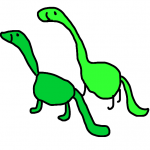 finding out amazing facts about them. Here you will find a selection of some of the best dinosaur stories for you to share together with lots of ideas for fun activities to extend children’s imaginative play. Ways of learning even more about dinosaurs are included as well for budding experts.
finding out amazing facts about them. Here you will find a selection of some of the best dinosaur stories for you to share together with lots of ideas for fun activities to extend children’s imaginative play. Ways of learning even more about dinosaurs are included as well for budding experts.
IT’S EASY! JUST CLICK ON A BOOK FOR ACTIVITIES
Our specially chosen books about dinosaurs
Where the Wild Things Are
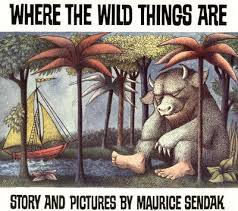 Maurice Sendak
Maurice Sendak
Red Fox
Age 3-5
Dressed in a wolf suit, Max gets up to mischief and is sent to bed without any supper. In his imagination or dreams his bedroom becomes a forest. He finds himself on a journey to the land of the Wild Things. After a strange adventure Max realises he is lonely and wants to be ‘where someone loves him best of all’. This is an award winning picture book which taps into children’s sense of mischief, magic, adventure and ultimately, need for the security of a safe and loving home.
Share the Story
Read aloud
As you read the story aloud pause occasionally to allow children time to talk about the pictures and think about what might happen next.
Join in
When you read the book again encourage children to join in with the parts they remember – they might like to read the words in capital letters eg ‘WILD THING!’ And ‘WE’LL EAT YOU UP!’ Encourage them to roar ‘terrible roars’, roll their ‘terrible teeth’ and show ‘terrible claws’ as if they are ‘wild things’ too.
Talk about the story
Children may have thoughts and questions about the story they want to share with you. Allow time to discuss them.
You could ask children how they think Max felt when he was sent to bed without any supper or if they think the wild things are scary. It doesn’t matter that there isn’t a ‘right’ answer to questions like these. Talking about their ideas and feelings will help children deepen their responses and develop their understanding of the story.
Tell the story
Encourage children to tell the story in their own words as you show the pictures. Listen to the way they tell it, they may begin to use some of the words or phrases from the story in their own re tellings
Watch the story read aloud here
Things to make and do
Make a map
Using a large sheet of paper pens and pencils children could draw an imaginary map of Max’s journey to the land of the wild things. Encourage children to talk to you about their map and show you Max’s route.
Story play
Fill a baby bath, tub or paddling pool with water. Place a small figure to represent Max in a toy boat so he can go on a journey to the land of the wild things.
If you don’t have a boat you could make one from a plastic container, with a stick for a mast and paper or fabric sails. Don’t forget to put Max’s name on the boat – or perhaps your child’s own name!
Make a crown
Using card make a crown for your child to wear to be Max king of the wild things. Children could gather toys together to be the wild things and act out the story.
Have a wild rumpus!
Play some favourite party music and dance together just like Max and the wild things.
Write a postcard
Give children a postcard shaped piece of card or download this postcard template and suggest they pretend they are Max writing a postcard home to tell his Mum what he has been doing in the land of the wild things.
Find out more
Read another story by Maurice Sendak
In the Night Kitchen
A Great Big Cuddle
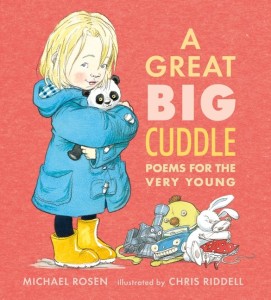 Michael Rosen, Chris Riddell (illus)
Michael Rosen, Chris Riddell (illus)
Walker Books
Age 0-5 years
This is a delightful and award winning book. Full of fun and language play, it’s a perfect entry to the world of poetry and rhyme. Very young children will want to hear, and repeat these contemporary rhymes again and again, just as they can with traditional nursery rhymes.
There’s lots which will resonate with young children and their parents as many of the poems tap into familiar feelings and experiences; being excited about a party in Party Time, feeling anxious in Lost, being told what to do in Are you Listening? or wanting to have a go at something in Let me do it.
This is an inspired collaboration between two of our Lovemybooks’ patrons; a great poet, Michael Rosen, and a great illustrator, Chris Riddell, with joyous results.
Share the book
You could read the poems in order or browse and dip into the book, stopping to share the pages that take your fancy. Children will develop their own favourites (and so will you!) and enjoy hearing you reading them again and again. Encourage children to join in with the words and actions and perhaps with completing the rhymes.
I don’t want, Oh Dear and Let Me Do It are just three of the poems with repeated lines or choruses which would be great fun for children to join in with.
The illustrations are absolutely delightful and children will enjoy looking at them and talking about them. Which are their favourite pages?
Watch Michael Rosen perform ‘I am Angry’ here:
Kids’ Poems and Stories With Michael Rosen
Visit Michael Rosen’s YouTube channel with more performances from A Great Big Cuddle
Things to do
-
Recite The Button Bop when you are buttoning up clothes.
-
Dance to Tippy-Tappy and Music.
-
After sharing Boing Boing children can try to roll up like a ball or pounce like a tiger. Wiggly Wiggly will encourage lots of delightful wiggling, jiggling and giggling.
-
Finger story will encourage finger play and thinking together what fingers can do.
-
Practise counting down together with Party Time.
-
At mealtime you can repeat the words of Lunchtime, crunching and munching.
-
In I AM HUNGRY you can have fun together talking about all the things you’d eat if you were really hungry, or what makes you really angry in I AM ANGRY. Can children make a really angry face?
-
With Once they can enjoy looking scary like a terrible ‘Berrible’ perhaps looking at their faces in a mirror! Children might like to draw their own picture of a terrible Berrible.
A parent writes
Jennie, George and Lizzie
"It’s not just the title that resonates with children there are some really great poems in this collection. The illustrations are so eye-catching my 2-year-old can easily find his favourites and the pictures give him plenty to talk about.
'I have loved exploring these poems with George who was 2 in May. He loves stories and that special time you get together when we read. He has been exploring sounds and words a lot lately and loves to watch your mouth when you make noises or sounds and any increased expression or intonation so these are perfect for him to join in with. His favourites are 'Boing! Boing!' where he bounces with me pounces and then does an impressive roar. He loves the finger play in 'Finger story' as well as the brilliant accompanying image which he notices every time. The poem has lots of actions and it finishes with bed so George can pretend to fall asleep which he loves doing with accompanying snores.'
'My four-year-old has just started school and is already coming home playing schools, and she enjoys the 'Lunchtime' poem with its rhymes, repetition and different sized words. Her school cardigan has buttons which she is learning to do up herself so the 'Button Bop' has come in handy a few times too. She has enjoyed noticing the exciting ways the text and images are laid out and how the words don’t need to be the same size. It also has a colourful contents page, so we have been able to look at that together too. She likes making up her own actions to join in with the poems and like most children the ‘silliness’. It is perfect.
We took this book away with us over the summer and it was lovely to see older children getting enjoyment out of it too. They love to read aloud, and this was perfect, the younger children didn’t need to sit and listen for long, they could join in and the older children loved performing the poems as well.'

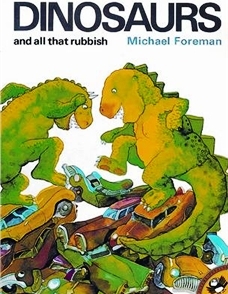

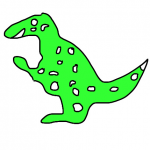



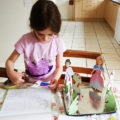


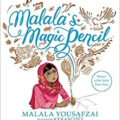
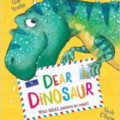


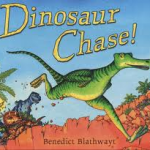

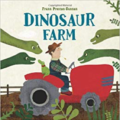

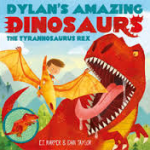
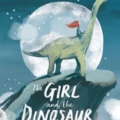



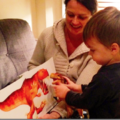

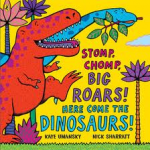
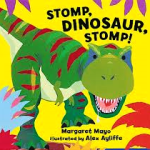
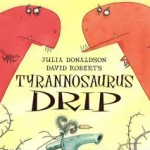
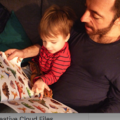
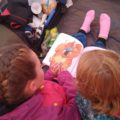
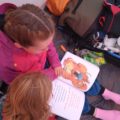
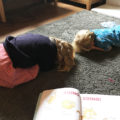
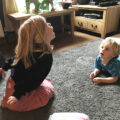
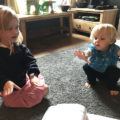
 Follow lovemybooksUK15
Follow lovemybooksUK15